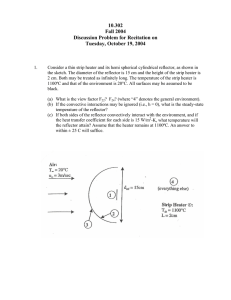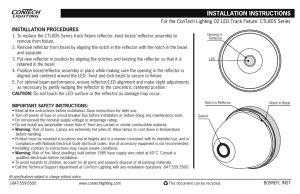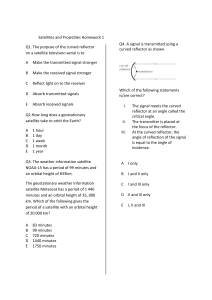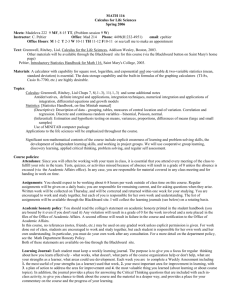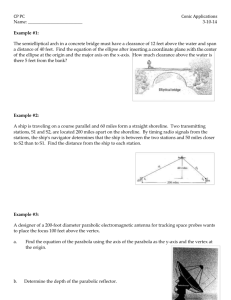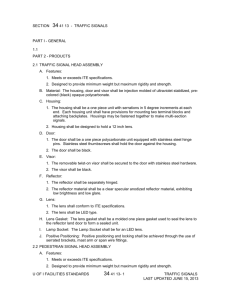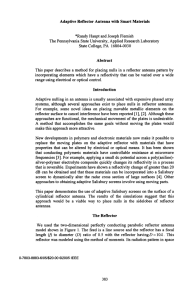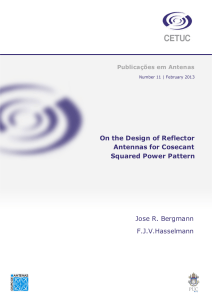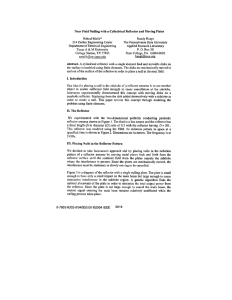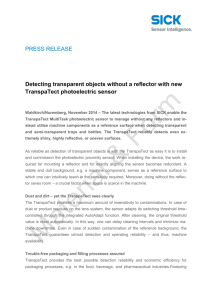Speed of Light
advertisement
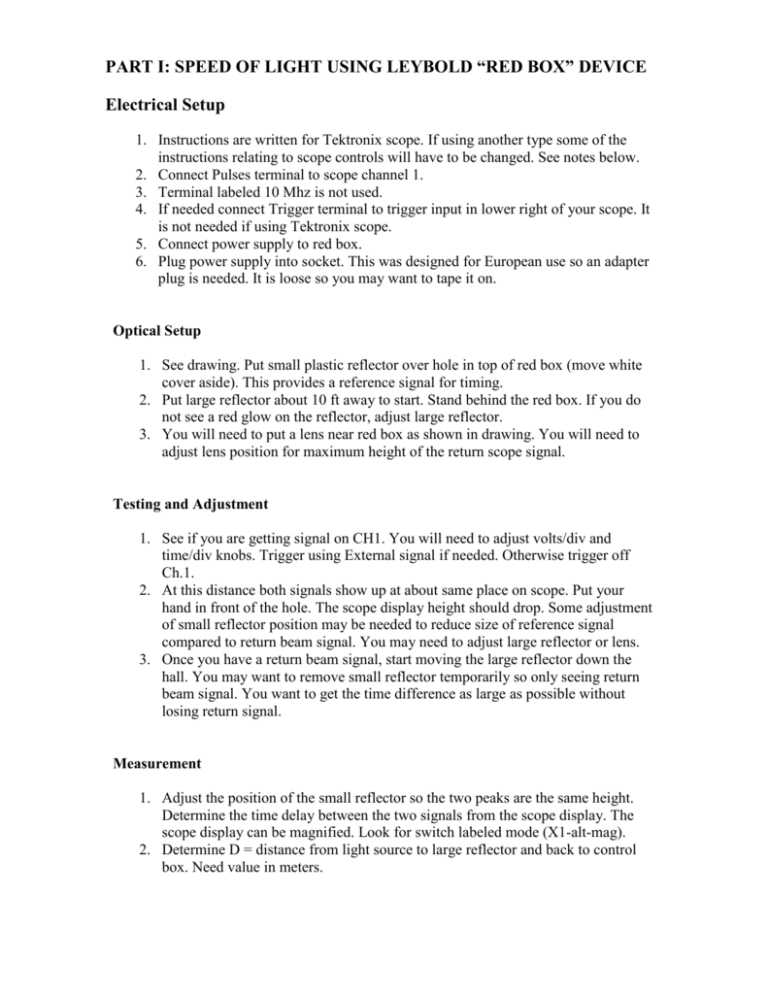
PART I: SPEED OF LIGHT USING LEYBOLD “RED BOX” DEVICE Electrical Setup 1. Instructions are written for Tektronix scope. If using another type some of the instructions relating to scope controls will have to be changed. See notes below. 2. Connect Pulses terminal to scope channel 1. 3. Terminal labeled 10 Mhz is not used. 4. If needed connect Trigger terminal to trigger input in lower right of your scope. It is not needed if using Tektronix scope. 5. Connect power supply to red box. 6. Plug power supply into socket. This was designed for European use so an adapter plug is needed. It is loose so you may want to tape it on. Optical Setup 1. See drawing. Put small plastic reflector over hole in top of red box (move white cover aside). This provides a reference signal for timing. 2. Put large reflector about 10 ft away to start. Stand behind the red box. If you do not see a red glow on the reflector, adjust large reflector. 3. You will need to put a lens near red box as shown in drawing. You will need to adjust lens position for maximum height of the return scope signal. Testing and Adjustment 1. See if you are getting signal on CH1. You will need to adjust volts/div and time/div knobs. Trigger using External signal if needed. Otherwise trigger off Ch.1. 2. At this distance both signals show up at about same place on scope. Put your hand in front of the hole. The scope display height should drop. Some adjustment of small reflector position may be needed to reduce size of reference signal compared to return beam signal. You may need to adjust large reflector or lens. 3. Once you have a return beam signal, start moving the large reflector down the hall. You may want to remove small reflector temporarily so only seeing return beam signal. You want to get the time difference as large as possible without losing return signal. Measurement 1. Adjust the position of the small reflector so the two peaks are the same height. Determine the time delay between the two signals from the scope display. The scope display can be magnified. Look for switch labeled mode (X1-alt-mag). 2. Determine D = distance from light source to large reflector and back to control box. Need value in meters. Analysis 1. Calculate speed of light = D / time delay. 2. Computer % error. Correct standard vacuum value due to index of refraction of air not being exactly one. 3. If time permits obtain additional measurements using other distances. Notes 1. The trigger terminal is used when the light pulses are too weak to trigger the scope. Use it with the GWINSTEK scopes. The results are not as good as older scopes because smallest scale is only 0.1 microsec/div 2. As of 2/2011 older but faster scopes were available to do this experiment (10 nsec scale w/o magnification). If not in Rm 300 try Rm 302. 3. Due to timing problem between trigger pulse and start pulse the trigger pulse cannot be used with the Tektronix scopes. 4. The GWINSTEK scopes can be used for Part II but the adjustments are more critical. Use 0.1 microsec scale for aligning the pulses during calibration. Use 0.2 microsec scale and magnification to determine time between pulses when measuring delay. 5. The 10 Mhz output of the Red Box provides a timing signal for use if the scope’s calibration is off.
